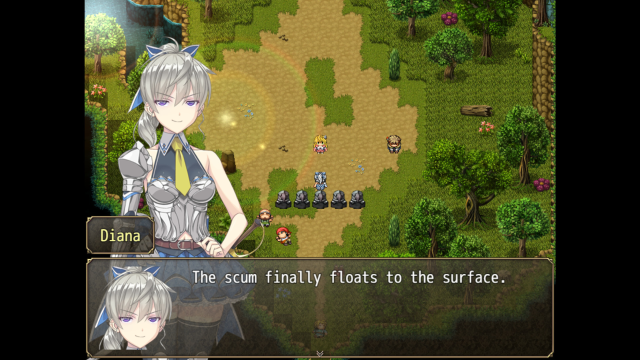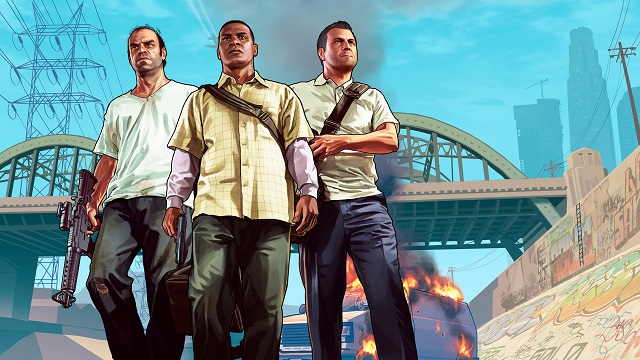By now, any active PC gamer is intimately familiar with the kind of mess the Steam store can be.
Thanks to Valve’s free-for-all publishing system, the store is filled with a needlessly large library of less-than-stellar games. Some games are designed to confuse players into thinking they’re a more popular title and others remain forever in beta or, despite its utility, Early Access
In general, these bulwarks can get annoying for those perusing the store. But in a different framework, they also draw out a lot of questions, some about Valve itself and some about the business practices of the developers Steam was designed to help.
Valve’s store is unique in that it allows developers to list games on the client before the company reviews them. Increasingly, this fills the store with the kinds of offerings described above — mostly forgettable titles and unfinished projects.
A large majority of these are objectively innocuous. But sometimes, something far more questionable comes along pulling the attention of gamers and non-gamers alike, sometimes even attracting the eye of legislators.
Recently, a game titled Rape Day popped up on Steam, immediately drawing criticism from gamers and games press alike. It wasn’t just the title of the game that drew anger — although that was probably enough on its own — but also the actual content of the game, which included “violence, sexual assault, non-consensual sex, obscene language, necrophilia, and incest”.

The game’s narrative — if you want to call it that — would have put players in the role of a “menacing serial killer rapist during a zombie apocalypse”. Players would control this psycho, making decisions for him. As the main character, players were to commit increasingly sadistic acts of violence against women, ranging from verbal harassment to raping and killing.
Once the game was noticed on the store, news of it spread quickly.
Myriad gaming sites reported on it. Gamers started a Change.org petition to get rid of it. The game even drew comment from British legislators who called for a governmental review of the game, saying it was “utterly abhorrent material” while questioning how Valve is able to get away with allowing something like it on its platform.
Eventually, Valve responded to the negative feedback with a post stating the game would not be distributed via Steam. In the official post, the company noted that it believes distributing the game via the store posed “unknown costs and risks” for the company.
From there, the post emphasized that Valve “respects the developers’ desires to express themselves,” adding that this particular developer simply expressed themselves in a way that made it difficult for Valve to continue its relationship with them.
To the irritation and indignation of many on social media, Valve did not express any moral objection to the game when coverage of the game first began. The sole reason, it seemed, the company rejected the game was because Rape Day could have impacted it negatively.
Of course, there were also those that believe Valve caved to pressure, unduly censoring a game that had every right to be on the platform.

While issues of censorship and whether or not games built exclusively around themes of sexual violence have a place in culture is an important topic when looking at this game, there’s something else here that’s important to examine: how Steam and other tech companies allow this to happen at all.
As already seen with recent government reaction to the selling of loot boxes and its potential impact on children, such a review could have a major impact on game development as we know it. If government becomes invested in this particular issue, it could completely change how digital game stores operate, taking control away from developers, publishers, and fans.
As many gamers know, video games have a long history of drawing scrutiny from government officials, parents, and the general public alike. For a long time, games like Grand Theft Auto drew criticism from the public and were consistently crusaded against by advocacy groups, politicians, and, specifically, the now-disbarred lawyer Jack Thompson.
However, despite all of the negative attention and pushback from those who were worried video games might be corrupting their children, the government has yet to restrict the kinds of games developers can make.
And there’s a reason for this.
When the games industry came under fire in the United States for being too violent, it followed in the footsteps of its older media siblings, movies and television, creating a self-governing board, the ESRB, in 1994. As we know, the ESRB then created guidelines on how to rate games in an effort to provide parents with the information they needed to make educated purchasing decisions.
This move allowed the games industry to avoid direct government regulation while also providing the grading system legislators and politicians desired.
Other regions followed suit, with Europe’s PEGI system implementing specific age designations, where 18 is equivalent to the ESRB’s M and AO (Adults Only) ratings. Australia, Russia, and Germany have their own ratings systems as well.

The interesting thing about these rating systems, at least in North America, is that for the most part, the government leaves the ESRB alone, allowing the video games industry to more or less regulate itself.
But it’s also worth noting that when the ESRB and the game rating systems were created, online and digital games were far less common. This meant that game sales went through physical stores.
These stores, particularly mainstream retailers like Wal-mart, GameStop, and Target simply elected to not carry games with an Adult-Only rating. Effectively, these storefronts treated games with such a rating the same way they would a pornographic film.
Of course, this didn’t mean that AO games were never made, but it did mean that developers would have to find stores willing to carry their products. For developers that wanted to reach a broader audience, it meant creating games that were rated either “T” or “M”. Even so, most brick and mortar retailers now card or require parental permission for the purchase of M-rated games.
With digital games, whether on Steam or PSN or Xbox Live, this barrier to entry does not exist and some online stores, particularly Steam, take that liberty with, perhaps, a grain of salt.
Valve prides itself on the fact it doesn’t “censor” developers, require games be rated by any outside board, or make (major, deliberate) attempts to control what is uploaded to the store, except in the very rare occurrence it is forced to by outside pressure (i.e. Rape Day).
It’s a “developer-friendly” approach.
Getting a game rated is an arduous and, in some cases, expensive process since different boards will force developers to change different things to meet different rating requirements. That’s not to mention Steam’s process makes Early Access releases all the easier.
The problem, however, is that Steam is the most mainstream digital storefront in gaming. Despite Epic making a push with its Epic Games Store, just about every gamer has Steam on their computer.
To underscore its ubiquity, digital stores sell game keys that can be used in Steam. Brick and mortar stores sell Steam gift cards, too. And, even with processes like Family View and age-gating, children can still easily see games like Rape Day via the Steam platform.

With all of this in mind, it’s not surprising that people are now asking how Valve can get away with running Steam the way it currently does. For those of us who spend a great deal of time on the internet and are familiar with the free-for-all “upload now, have it removed when you’re caught” system on almost all media platforms, this is normal.
For most digital services, this system generally has the added “benefit” of absolving them from responsibility for the content on their site.
Just as important is the fact that many legislators and politicians still view video games as being primarily for children and teens. For that reason, the video game industry is analyzed even more closely when it comes to issues such as this.
At the end of the day, if Valve doesn’t want to be the catalyst for increased video game legislation, which could restrict how it and other companies do business, it may need to follow in the footsteps of early developers and the brick and mortar stores that came before, opting to instead improve how it regulates games on its platform.







Published: Mar 11, 2019 08:29 pm